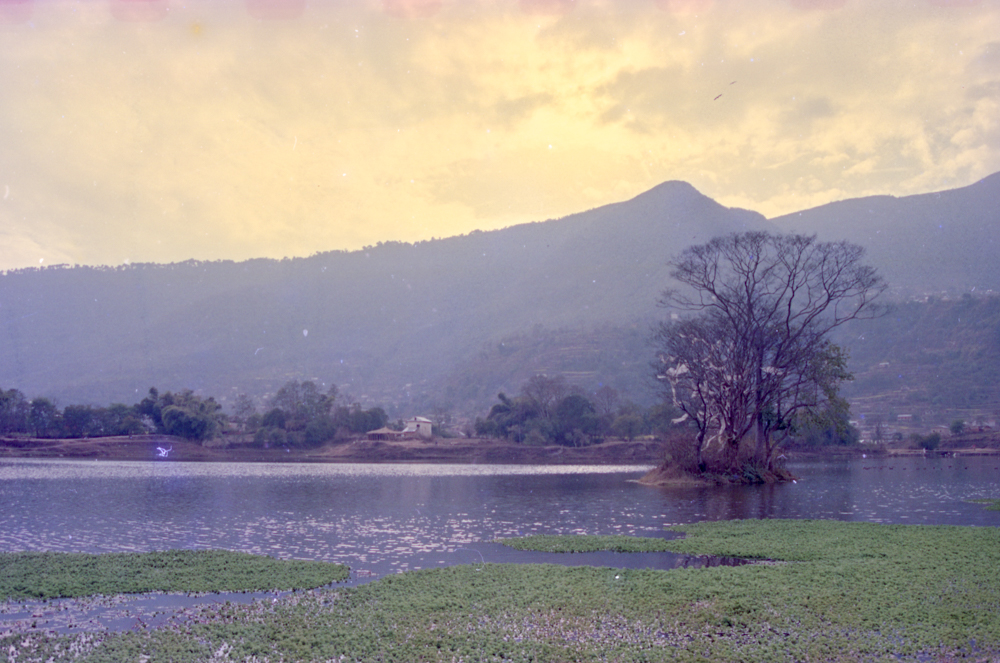On Ashad 10th 2078, Kirtipur Municipality published a notice in Samacharpatra.
They wanted suggestions by the general public on new tourist infrastructure development in Taudaha, in ward six. They planned to build a main entrance gate, a water fountain, a temple for Karkateshwor Naag, a chautara, a symbol of Taudaha and a bridge. By adding big structures, the local government wants to make Taudaha more “beautiful”.
Kirtipur Municipality’s approach is similar to what other municipalities have been doing all around Nepal. A couple of years ago Kathmandu Metropolitan City initiated a similar — and very controversial — development plan for Rani Pokhari. They planned a concrete pond with a musical water fountain and an amphitheater for people to sit. To promote tourism, Kathmandu’s mayor also made passionate pleas for coffee shops.
It is good that Kirtipur wanted public consultation. Later on 6th Shrawan, Kirtipur Municipality also did online consultation with the experts, ward chairman and public. They made this attempt despite the Covid crisis.
But there’s another side to the story. At first, the notice was posted in a hard to see corner notice board of the Municipality office. It was widely noticed only after someone posted its picture on social media on first of Shrawan. It seems the Municipality was forced to organize the public consultation because of public outcry.
Also, people campaigning to conserve Taudaha’s natural habitat discovered that a Detail Project Report had already been submitted to the Municipality in December 2019. Because of this, the notice for public consultation and public event seems just a staged event.
Many people who are aware of Taudaha’s natural importance dislike the Municipality’s development plan. To understand why, we need to understand Taudaha’s environmental, cultural and spiritual importance.
The legend of Kathmandu Valley being a giant lake is well known among everyone living here. After Manjushree let water out by creating Chobar gorge, the Valley’s settlement started. In the process many snakes and inhabitants of water left. But the king of snakes, Karkat, stayed in Taudaha. People believe that if Karkat naag leaves, the Valley will see misfortune and drought. Many other legends and stories tell tales of naags and Taudaha.
Taudaha is a religious water body. People come to pay homage to Karkat Naag and his wife with the belief that they still reside there.
Taudaha is not an artificial pond, or made in the interest of humans. It’s a wetland, recharged naturally by water from nearby sources naturally. According to the Bird Conservation Nepal (BCN), Taudaha is home to 118 bird species from 28 different families, including migratory birds from China, Mongolia and Siberia. This place has duck species such as the famous pink-head duck (Rhodonessa caryophyllacea), which is critically endangered globally. Taudaha attracts other winter visitors: the Great Cormorant, Ruddy Shelduck, Northern Shoveler, Mallard, Gadwall, Eurasian Coot, Northern Pintail and Common Teal.
Besides birds, Taudaha is also a habitat of thirty-nine species of aquatic plants and thirty-eight species of aquatic animals including fishes and macro invertebrates, mainly Oligochaeta, Ephimeroptera and Mollusca.
The concrete embankment and restaurants surrounding the wetland degraded its natural setting. As a result, the number of resident and migratory birds has dropped. In last 10-15 years up to 70 percent of birds visiting this place have decreased.
According to Ms. Kriti Nepal, Policy and Advocacy Officer in Bird Conservation Nepal (BCN) due to the urban developments around Tudaha, habitation and feeding habitat of birds are destroyed. The noise from the nearby restaurants has caused decrease in number of sound sensitive birds.
The Municipaliy’s plan ignores Taudaha’s special history and nature. Any intervention, however small, can degrade nature. The Municipality’s proposed plan will only worsen the natural setting. Taudaha is not unknown to Kathmandu residents. It doesn’t need promotions. What we need is sustainable and responsible tourism.
In the online discussion organized by Kirtipur Muncipality, Mr. Bushan Tuladhar has rightly stated that people don’t come to “see” natural sites, they come to “feel” nature. With the Municipality’s development infrastructure, most probably concrete, what will visitors feel?
Kirtipur Municipality’s aim is to strengthen religious values by constructing a temple for Naag. Then doing so will actually will kill the naags living there. If that happens, we are definitely on the wrong track. Hinduism, Buddhism and animistic traditions all try to make people respect and take care of nature. Humans tend to forget that we share this earth with other living beings. We need diversity in nature for it to function well.
The ward chief of ward number six said he wants to make Taudaha more beautiful. He is not the only person who thinks that way. If we look around, then we can see many big concrete destructive constructions as an attempt to make a natural place more beautiful.
We need to rethink our concept of beauty. Isn’t nature beautiful enough? Do we need concrete to make it more “beautiful”?
It’s high time we in Kathmandu rethink our public places. Is attracting more people to that site the solution? Do we want to conserve just water and few species living in it? If we want to safeguard nature, we need to safeguard all the associated natural elements such as frogs, fishes, snakes, birds, toads, and even insects.
When we enter into nature we cannot sanitize it and, in the process, kill all other organisms. Let our feet touch dirt when we enter Taudaha! Let there be native bushes growing that might not smell pleasant or look pretty. These plants might support the ecosystem. Imported fishes, imported plants, and an imported development concept might not be favorable for natural environment.
If we want a trimmed lawn, artificial fountains, blinking lights, food stalls, cafes and other amenities, then we can go to lots of other places. The beauty of Taudaha is its natural setting. Kathmandu has few places like this left. Let’s not kill it.
One last point: we have recently been hearing about monsoon floods creating havoc in many places of Kathmandu Valley. It’s not that we started to get more rainfall or that our rivers are going crazy. But with our obsession for concrete, we are closing avenues for water to flow naturally. In the next few years, if the Municipality’s development plan succeeds, it won’t be surprising to read about widespread flooding in Taudaha.



